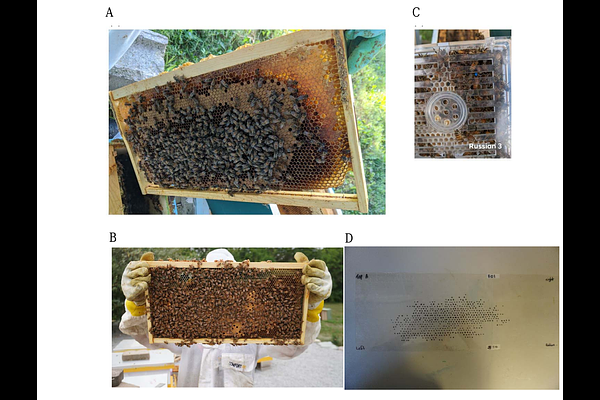Genetic Variation in Honey Bee queen Reproductive Performance: Implications for Colony Growth and Sustainability

Genetic Variation in Honey Bee queen Reproductive Performance: Implications for Colony Growth and Sustainability
Li-Byarlay, H. H. L.-B.
AbstractThe reproductive performance of honey bee (Apis mellifera L.) queens is a key determinant of colony health and productivity. However, variation in queen fecundity among different genetic lineages remains poorly understood. In this study, we compared the egg-laying capacity and colony demographics of queens from three honey bee populations, Russian, feral, and commercially reared stocks over multiple years (2020, 2021, and 2024). Using standardized colony conditions and controller assessments of queen egg-laying rates, we found that Russian and feral queens exhibited significantly higher fecundity than commercial queens. In 2024, we further observed that worker populations in Russian and feral colonies increased over time whereas commercial colonies experienced a decline, suggesting potential differences in colony sustainability. While no significant differences were detected in pollen storage or brood area in earlier years, trends in brood production alighted with egg-laying patterns. Our results highlight the importance of genetic background in shaping queen reproductive performance and colony growth. These findings provide insights for breeding programs aimed at improving queen quality and colony resilience, particularly in the face of environmental stressors such as Varroa infestation and resource availability.